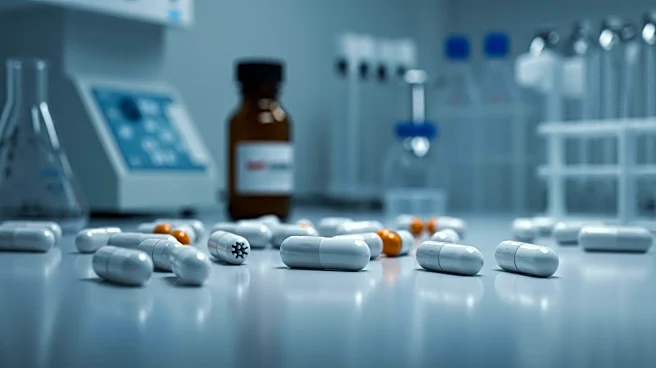What's Happening?
Researchers at the Massachusetts Institute of Technology (MIT) have developed two new potential antibiotics using artificial intelligence to target drug-resistant gonorrhoea and MRSA. The AI-designed drugs were created atom-by-atom and successfully killed the superbugs in laboratory and animal tests. The study, published in the journal Cell, involved screening 36 million compounds, including those not yet discovered. The AI was trained with chemical structures of known compounds and data on bacterial growth inhibition. Two approaches were used: one identified promising starting points from millions of chemical fragments, while the other allowed the AI free rein. The leading designs were tested on bacteria and infected mice, resulting in two new potential drugs.
Why It's Important?
The emergence of drug-resistant infections poses a significant threat to global health, with over a million deaths annually attributed to resistant bacteria. The use of AI in antibiotic design offers a novel approach to identifying new treatments, potentially leading to a resurgence in antibiotic discovery. The ability to design molecules quickly and cheaply expands the arsenal against superbugs, providing a strategic advantage in combating bacterial resistance. However, the economic challenge of developing antibiotics with limited commercial value persists, as preserving their effectiveness requires minimal usage. The study highlights the potential of AI to revolutionize drug discovery and address the shortage of new antibiotics.
What's Next?
The AI-designed antibiotics require further refinement and clinical trials before they can be prescribed, a process estimated to take one to two years. Researchers emphasize the need for improved models that predict drug effectiveness in the body, beyond laboratory performance. The study also highlights the challenge of manufacturing AI-designed drugs, as only two of the top 80 gonorrhoea treatments were synthesized. The economic viability of new antibiotics remains a concern, as their limited use to preserve effectiveness makes profitability difficult. Continued research and development are necessary to overcome these challenges and bring AI-designed antibiotics to market.











